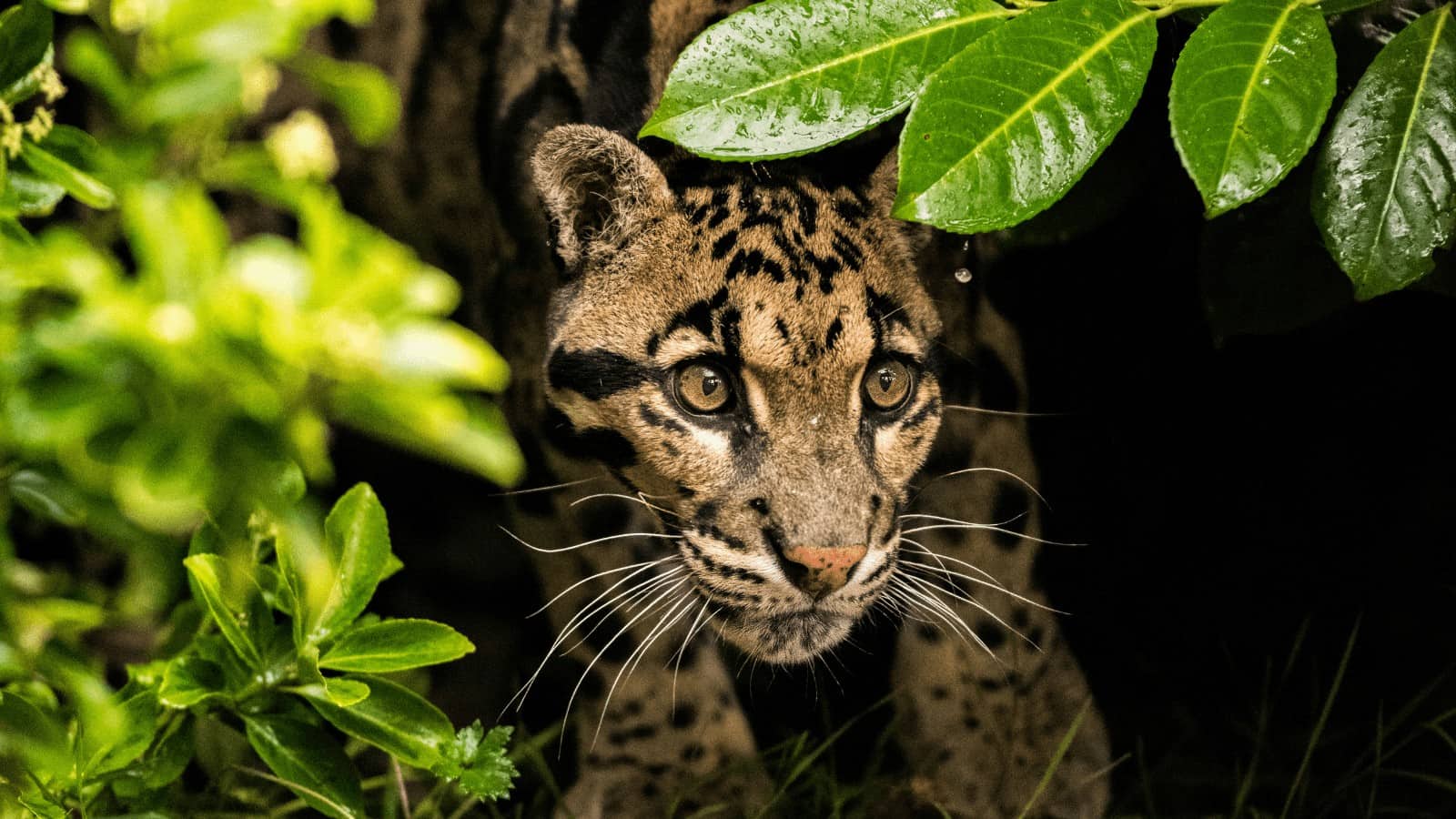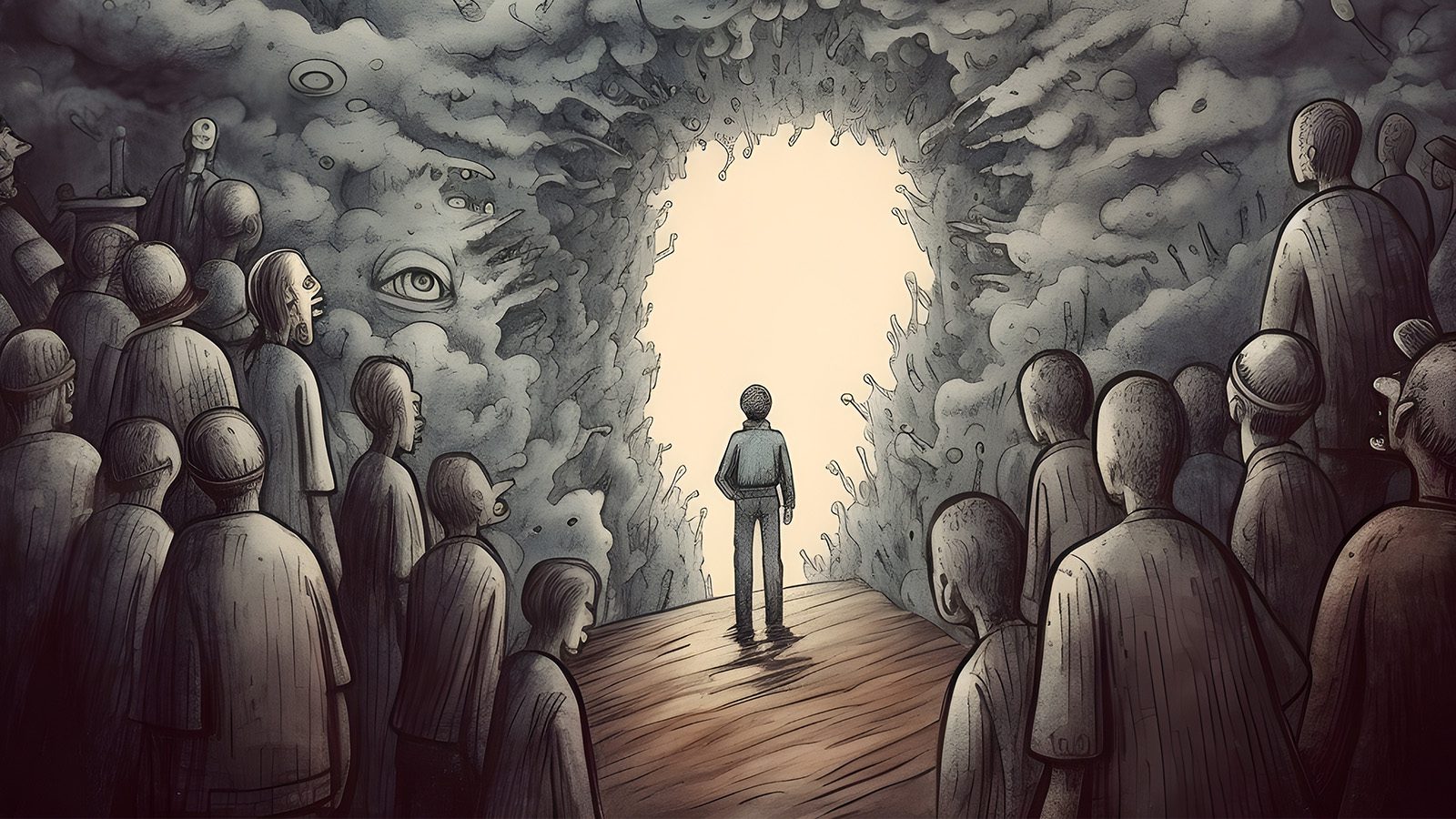Endangered and vulnerable species are often protected by law. The idea that some amazing animals are at risk of disappearing from our world completely by poachers is a deeply saddening thought. Unfortunately, that’s the reality that many creatures around the world face.
One such animal is the clouded leopard. The clouded leopard is native to Asia, mainly found in a variety of hunting grounds, the Himalayan foothills, and Indonesian rainforests. Named after the spots on its coat, people rarely see this mysterious creature. Thus, officials consider it vulnerable in terms of the species population.
Sadly, as with every rare animal, hunters and poachers desire to kill these endangered creatures, whether for profit from their body parts or simply for sport and “fun.” Recently, a graphic image of a dead clouded leopard being carried and posed with by a group of smiling men began circulating social media.
Outrage sparked after the image went viral, prompting animal welfare advocates to demand justice. Here’s everything you need to know about the pictures showing poachers smiling after killing a rare leopard.
Pictures Captured Of Poachers Smiling After Killing A Rare Leopard
1. The Horrifying Picture
On the 8th of May, a post was shared on a Malaysian Facebook group called Hiking & Camping Around Malaysia that shocked and angered locals.
The post, which contained multiple screenshots of another Facebook user’s personal post, showed a group of men proudly smiling and showing off a dead clouded leopard. Here are some more details about the pictures.
We will not share the photograph of this illegal hunting activity, out of respect for this beautiful cat species. Instead, we will describe the photos. But here is what a healthy clouded leopard looks like:
a) Location
The original pictures were supposedly taken in Tampin, which is a district in Dangi in the state of Negeri Sembilan, Malaysia. There is no way to confirm this for certain, but the original pictures’ caption claimed this.
b) People Involved
The post’s uploader, named Siva Nadarajan, shared the screenshots after seeing the original post on his feed. Siva was driven to share the screenshots due to his outrage at the mercilessly and cruelly killed vulnerable animal.
The original pictures were posted by a Facebook user who went by Max Mantra, though searches could not turn up any positive results for users by that name. None of the men in the pictures has been successfully identified.
c) Men In Uniform
In the background of one of the several images, a separate group of men, donning blue uniforms and one in an orange hat, are standing and kneeling. It is unknown why those men are there and what their connection is with the scene.
Siva states that these men work at JPAM, which is now known as the Angkatan Pertahanan Awam Malaysia or APM; basically, the Malaysian Civil Defence Force. However, there is currently no word on whether the men really are from the APM or not.
d) Reactions
Thus far, Siva’s post has gained over 1,700 likes and 800 shares, and many angry reactions from those equally appalled by the cruelty of the men pictured.
Siva reportedly attempted to reach out to the Jabatan Perhilitan Semenanjung Malaysia, or PERHILITAN, which is also known as the Department of Wildlife and National Parks Peninsular Malaysia, in order to report the event. PERHILITAN is responsible for all protection and management tasks surrounding national parks and wildlife within the nation.
The call from Siva was initiated at 3 in the afternoon, and he wanted to make his report, but it was not to be. An operator placed Siva’s call with the Tampin PERHILITAN agency, but the person who picked up informed him that they could not take this report as all staff had allegedly gone home for the day.
There is currently no follow-up information, so we are not certain whether Siva was able to make his report after all, or if he never managed to get through to the agency. As of yet, this incident remains uninvestigated, and the poachers present in the photos have not been identified.
2. What Is The Clouded Leopard?
The clouded leopard is native to a variety of Asian countries, not just Malaysia. They are believed to be the part of the evolutionary chain that links small cats to Pantherinae cats, as it is the smallest species of the latter.
Surprisingly, clouded leopards aren’t actually very close relatives to leopards, making their name a little misleading. Here are some other features of clouded leopards.
a) Appearance
Clouded leopards have fur that is either ochreous or dark grey in hue, with dark grey and black spots in a blotchy pattern occurring throughout their fur. They have stout and short legs with wide paws.
These animals often have stripes in some form over their cheeks, with black ears. They have larger black splotches on their head, spine, loins, shoulders, and forelegs. Their flanks, tail, and lower legs typically have more irregular spots, often with curved stripes.
Clouded leopards have vertical slits for pupils, and their eyes vary from yellowish to greenish in shade (and their eyesight is also pretty sharp!). Their long and low skulls provide a strong facial structure.
b) Teeth and Mouth
Clouded leopards are often dubbed the saber-tooths of today thanks to their extremely large canines, which are the biggest when measured against body size among big cats. In their throat, they have an ossified hyoid bone that allows them to purr when in a positive mood.
c) Climbing
Clouded leopards are exceptional climbers, due in part to their big paws, strong but short legs, and sharp claws that can easily dig into an item for a better grip. Their rear ankles are rotating so they can climb down from high locations headfirst with no problem.
These animals are known for being some of the best climbers out there, and they have been seen hanging upside down from branches. The tails on these wildcats are decently long, too, for good balance.
Thanks to long hind limbs that allow for easier jumping, clouded leopards are also very agile in general. The fact that their radii and ulnae bones are not fused means that they can move better, allowing for easier hunting and stalking as well as good climbing ability.
d) Diet
Clouded leopards might have great climbing ability, but they don’t use this much when hunting. Their diet mainly consists of animals they can easily catch and hunt on the ground, ranging from smaller animals such as birds to larger ones such as pigs and deer.
e) Behavior
Not many researchers have been able to observe clouded leopards at length in the wild, so scientists truly have no idea what their behavior is like. However, some features can be known.
Clouded leopards keep to themselves, living solitary lives and primarily coming out in the evenings and at night. They tend to spend their days in trees, lounging around, then heading to the ground for nighttime hunting.
These wildcats scent mark – much like house cats! – and they can call by “crying” or meowing, both typically to aid in locating other clouded leopards. When greeting another one of their kind, they react respectfully with raised muzzles; if they become aggressive, however, they start to hiss and growl.
f) Cubs
Most clouded leopard females will have between one and five cubs per litter, with each litter being born once a year. Cubs will stay with their mothers and be mostly dependant on them up to around the age of 10 months.
3. The State of The Clouded Leopard
Clouded leopards live in forest areas that are slowly shrinking due to deforestation; habitat loss can lead to significant risks in population building. They are also frequently poached and hunted. It is believed that fewer than 10,000 of them still live today, with less than 1,000 of them per habitat.
The International Union for Conservation of Nature considers the clouded leopard a vulnerable species. Sadly, they continue to be hunted. Here’s what they are hunted for:
- Their spotted fur coat and skin, for clothing
- Meat and bones (which are used in traditional medicine)
- Their teeth and claws, for clothing and decoration
- Alive, as exotic pets
In the past few years, domestic markets for the clouded leopard and the products made from its body parts have clearly operated in Vietnam, Indonesia, and Myanmar. In fact, in a survey of just four markets from 1991 to 2006, 301 different clouded leopard body parts were spotted in Myanmar, believed to have come from a minimum of 279 of these wildcats.
4. Current Laws on Poachers in Malaysia
As of April 2019, an amendment to Malaysia’s Wildlife Conservation Act 2010 makes its laws much stricter. It boosts the potential penalties for poachers. The current minimum sentence for those caught is five years of jail time and an RM1 million (approximately US $240,000) for their crimes. This might increase to RM5 million (approximately US $1,200,000).
Although the act will be tabled at the end of the year, animal rights activists and environmental conservation activists are calling for stricter laws throughout the nation. So, we can keep our positive thinking on for some change and better protection in the near future.
Zoo Negara, the country’s national zoo, has been attempting to convince the government to increase the penalty even further. Suggestions include the possibility of life in prison or even the death penalty for convicted poachers. This isn’t due to clouded leopard numbers, either. It’s due to the decreasing number of wild tigers, now dipping below 200.
Dr. Mat Naim Ramil, the Zoo Negara Malaysia Zoology, Veterinary & Giant Panda Conservation Centre’s director, believes that the country should start to follow in China’s footsteps. China harshly punishes poachers of the giant panda with zero-tolerance. Punishment ranges from 10 years in jail to the death sentence.
Activists also believe that the country may need to set up a special army division designed to protect species at risk in the country. Ideally, this division can help to prevent trophy-hunting by poachers, as currently done in some African nations as well as in India.
Final Thoughts On Some Pictures Captured Of Poachers Smiling After Killing A Rare Leopard
Poaching is a serious problem all around the world. It is truly disheartening to see how brutally and cruelly this clouded leopard was treated. We also feel concerned at how proud and unashamed those in the picture appear. We hope that ongoing investigations will uncover the identities of those who killed the wild cat. Indeed, they must face justice.













